Hygiene may not come first to mind with a widely adopted material like acrylic. No matter the use, your chosen material directly impacts safety, performance, and long-term value. That’s where you can stick to sanitary acrylic sheets.
Unlike traditional materials, sanitary acrylics are engineered to resist moisture, stains, and microbial growth. It makes them ideal for functional and decorative applications. And this article explores the advantages of sanitary acrylics.
What Is a Sanitary Acrylic Sheet?
A sanitary acrylic sheet is a high-performance thermoplastic panel made from polymethyl methacrylate (PMMA). It’s engineered specifically for environments requiring strict hygiene standards. Unlike general acrylics, sanitary variants feature distinctive surfaces, coatings, and resistance.
Chemical Composition
Sanitary acrylic sheets are composed of PMMA (polymethyl methacrylate). It’s a synthetic polymer derived from methyl methacrylate monomers. Key chemical traits include –
- High transparency (up to 93% – 95%).
- Outstanding thermal stability.
- Incredibly low water absorption.
- Resistance to acids, alcohols, and disinfectants.
The sheets may further include UV stabilizers, antibacterial additives, and reinforced backing layers.
Available Variations
Sanitary acrylic sheets come in multiple grades, finishes, and dimensions. The noteworthy ones are –
- Glossy vs Satin finishes (ALTUGLAS™ CS and Easy Forming ranges)
- Thickness range from 2.5 mm to 5 mm, with custom options.
- European white, pastel beige, whisper pink, mandarine, and custom shades.
- Standard sheets range from 850 × 850 mm to 2550 × 1850 mm.
- Precise CNC machining and laser cutting for custom sheet sizes.
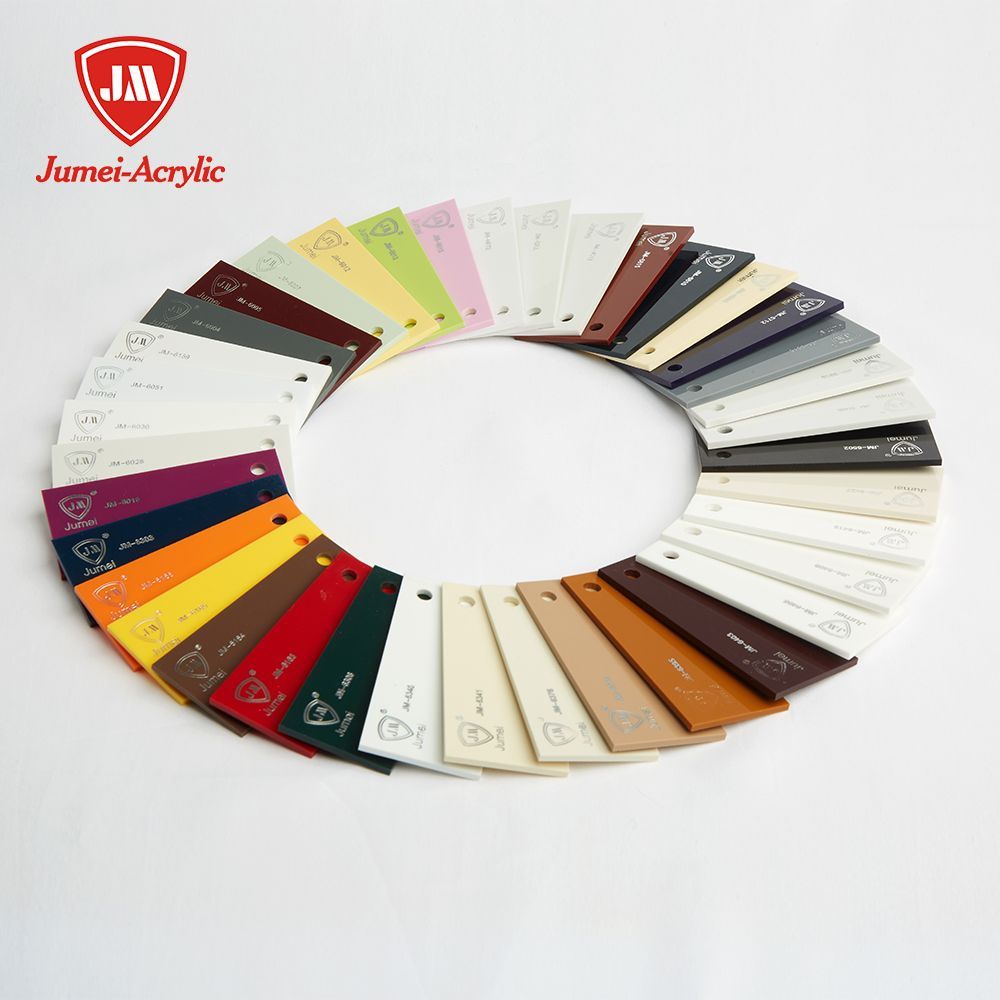
What Makes Sanitary Acrylic Sheets Different?
· Antimicrobial Additives Integration
Antimicrobial agents are embedded directly into the polymer matrix during production. It ensures uniform distribution and long-lasting efficacy, unlike cheap surface coatings.
The integration mostly revolves around ‘Silver Ion Technology‘. However, manufacturers also employ different measures (copper alloying or Microban®) to introduce the chemical agent.
· Certifications
Sanitary acrylic sheets often meet –
- FDA 21 CFR 177.1010 for food contact.
- NSF/ANSI 59 for food equipment.
- ISO 9001:2015 for quality management.
- EN 263 for sanitary ware applications.
How Antimicrobial Properties Work
- Silver ions and other agents penetrate microbial cell walls. It disrupts DNA replication, enzyme activity, and cell respiration. It directly triggers mass-scale microorganism death or the inability to reproduce.
- And the proven efficacy works fine against bacteria (E. coli, MRSA), viruses (limited but present), fungi, and mold (prevents biofilm formation).
- Built-in antimicrobial additives remain active for the lifetime of the sheet. Studies show >99.9% bacterial reduction even after years of use.
Example: North Texas Community Health Center installed antimicrobial acrylic partitions. It resulted in a 40% increase in spatial brightness against a 25% drop in patient stress.
Benefit #01: Superior Antimicrobial Protection
- Kills 99.9% of Common Bacteria: Sheets infused with silver-ion or nano-silver antimicrobial coatings can suppress bacteria like Staphylococcus aureus and Escherichia coli.
- Virus Resistance (Including Enveloped Viruses): While not antiviral in the strictest sense, the non-porous surface prevents viral adherence for effective disinfection. Some sheets have permissions regarding ASTM E2180 for antimicrobial efficacy.
- Fungal and Mold Prevention: The non-porous surface inhibits fungal colonization. Antifungal additives like SilverShield® and Microban® in polymeric formulations prevent mold in humid environments.
- Biofilm Formation Prevention: Biofilms are notoriously resistant to cleaning. Sanitary acrylic’s smooth surface and antimicrobial coatings reduce microbial adhesion and quorum sensing, key steps in biofilm development.
- 24/7 Antimicrobial Action: Embedded silver-ion technology remains active throughout the product’s life, offering round-the-clock defense.
- Self-Sanitizing Surface: The antimicrobial layer actively inhibits microbial growth, reducing contamination between cleaning cycles.
- Reduced Need for Frequent Chemical Disinfection: Because the surface resists microbial buildup, facilities can reduce reliance on harsh chemicals, lowering potential pricing of maintenance and environmental impact.
- Maintained Efficacy Over Product Lifetime: UV-stabilized and chemically resistant coatings ensure antimicrobial performance does not degrade over time.
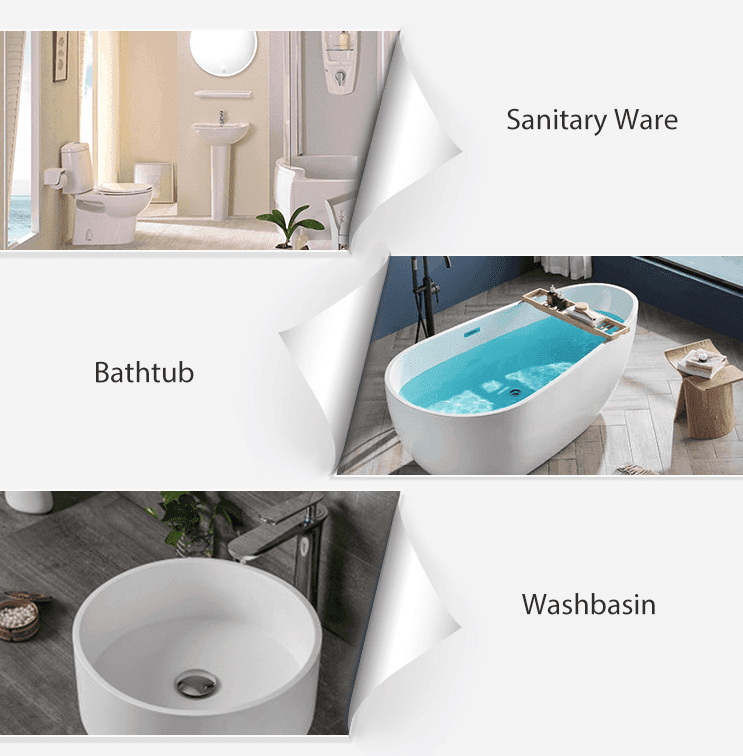
Scientific Evidence
SGS testing confirms compliance with EN 263:2008 standards for antimicrobial performance, water absorption, and thermal stability.
Studies by SGS and Intertek have shown that untreated acrylic surfaces can harbor up to 10,000 CFU/cm² (colony-forming units), while antimicrobial-treated acrylic sheets consistently maintain levels below 10 CFU/cm², even after repeated exposure to contaminants.
Relevant Applications
- Hospital Operating Rooms and Wards: Reduced HAIs (hospital-acquired infections) by supporting sterile barrier protocols.
- Food Preparation Surfaces: Prevention of cross-contamination that complies with FDA food contact safety standards.
- Laboratory Workbenches: Maintaining aseptic conditions, as they can resist chemical spills and microbial colonization, including the http server.
- Public Restroom Facilities: Resistance against high humidity and frequent applications means no more odor-causing bacteria.
- Schools and Childcare Environments: Protection against vulnerable populations; minimizes the spread of colds, flu, and skin fungi.
Benefit #02: Steady Cleaning and Maintenance
- Non-Porous Surface: Acrylic is inherently non-porous, meaning it doesn’t absorb moisture or harbor bacteria. This makes it ideal for hospitals, food prep areas, and bathrooms.
- Stain Resistance: The smooth, sealed surface resists staining from cosmetics, oils, and common household chemicals. HUASHUAITE® SW acrylic sheets, for example, maintain clarity even after repeated exposure to harsh substances.
- Chemical Compatibility: Acrylic is compatible with disinfectants like diluted bleach, hydrogen peroxide (3% – 5%), and isopropyl alcohol (30% – 70%). It resists degradation from these agents, unlike materials like painted surfaces or tile grout.
- Smooth Surface Finish: Advanced manufacturing techniques like flame polishing and CNC routing produce ultra-smooth edges and surfaces, reducing dirt adhesion and simplifying cleaning.
Maintenance Requirements
Routine cleaning involves wiping with a soft microfiber cloth and mild soap or detergent in lukewarm water. For disinfecting, use diluted bleach (5 tbsp per gallon), hydrogen peroxide, or approved cleaners like Lysol with peroxide.
- Compatible Cleaning Agents: Palmolive, Brillianize, diluted alcohols, and anti-static sprays are safe. Avoid ammonia, acetone, gasoline, and abrasive compounds.
- Frequency of Cleaning: Choose weekly or biweekly cleaning depending on traffic. Got for a monthly or quarterly cleanup in high-traffic or healthcare settings.
- Equipment Needed: Microfiber cloths, soft sponges, anti-static sprays, and optional ionized air guns for dust removal. No need for harsh scrubbing tools or specialized machinery.
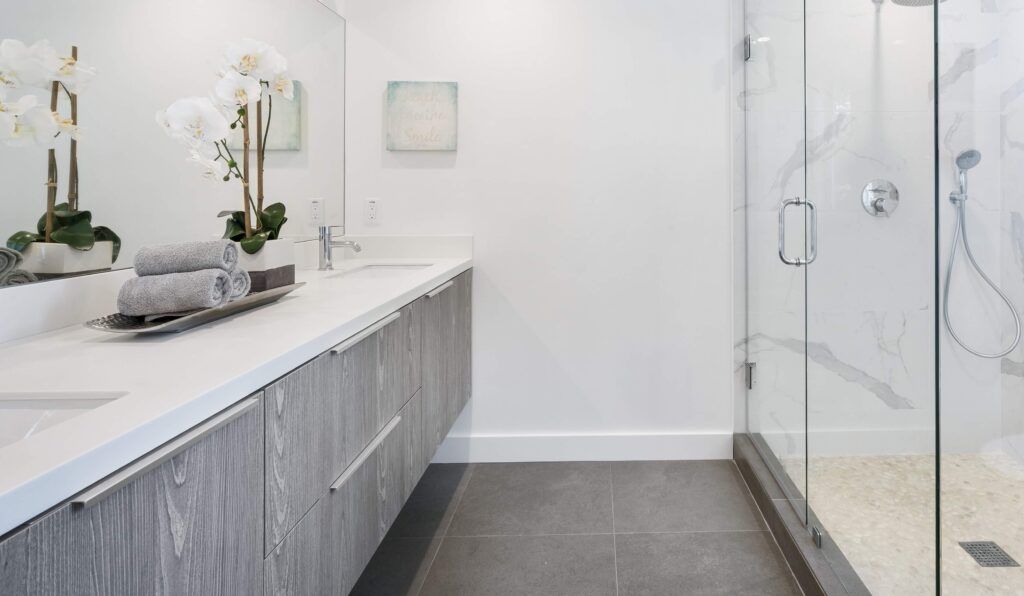
Cost Savings Through Reduced Maintenance
- Labor Time Reduction: Cleaning acrylic takes 30–50% less time than tile or stainless steel due to its smooth, non-porous surface. Ionized air cleaning eliminates manual dusting, saving person-hours.
- Chemical Consumption Decrease: Less frequent use of harsh chemicals due to stain resistance and easy wipe-down protocols. Compatible with eco-friendly, low-volume cleaners.
- Equipment Longevity: Acrylic’s resistance to corrosion and chemical wear extends the life of cleaning tools and surrounding fixtures.
- Reduced Replacement Frequency: High-quality acrylic sheets like ALTUGLAS™ and HUASHUAITE® are engineered for a 30-year design life. UV stability and scratch resistance lessen the need for refinishing or replacement.
Benefit #03: Chemical (Stain) Resistance
Sanitary acrylic sheets, primarily made from polymethyl methacrylate (PMMA), exhibit broad-spectrum chemical resistance, making them ideal for high-sanitation environments.
Resistance to Common Disinfectants
- Isopropyl alcohol (IPA): Safe for short-term exposure (≤30 min); prolonged contact may cause brittleness.
- Bleach (Sodium hypochlorite 5%): Compatible for routine disinfection.
- Quaternary ammonium compounds (Quats): Mild and effective; widely used in healthcare cleaning protocols.
Compatibility with Industrial Cleaning Chemicals
- Hydrogen peroxide (3%): Excellent compatibility; preferred for medical-grade sanitation.
- Ammonia-based cleaners: Generally safe for acrylic surfaces.
- Acids and bases: Acrylic resists weak acids (pH 3–5) and bases (pH 9–11) with no degradation.
Solvent Resistance Characteristics
Sensitive to strong solvents like acetone, MEK, and aromatic hydrocarbons (toluene, benzene), which can cause swelling or cracking. Stress-free cast acrylic performs better under chemical exposure than extruded or stressed variants.
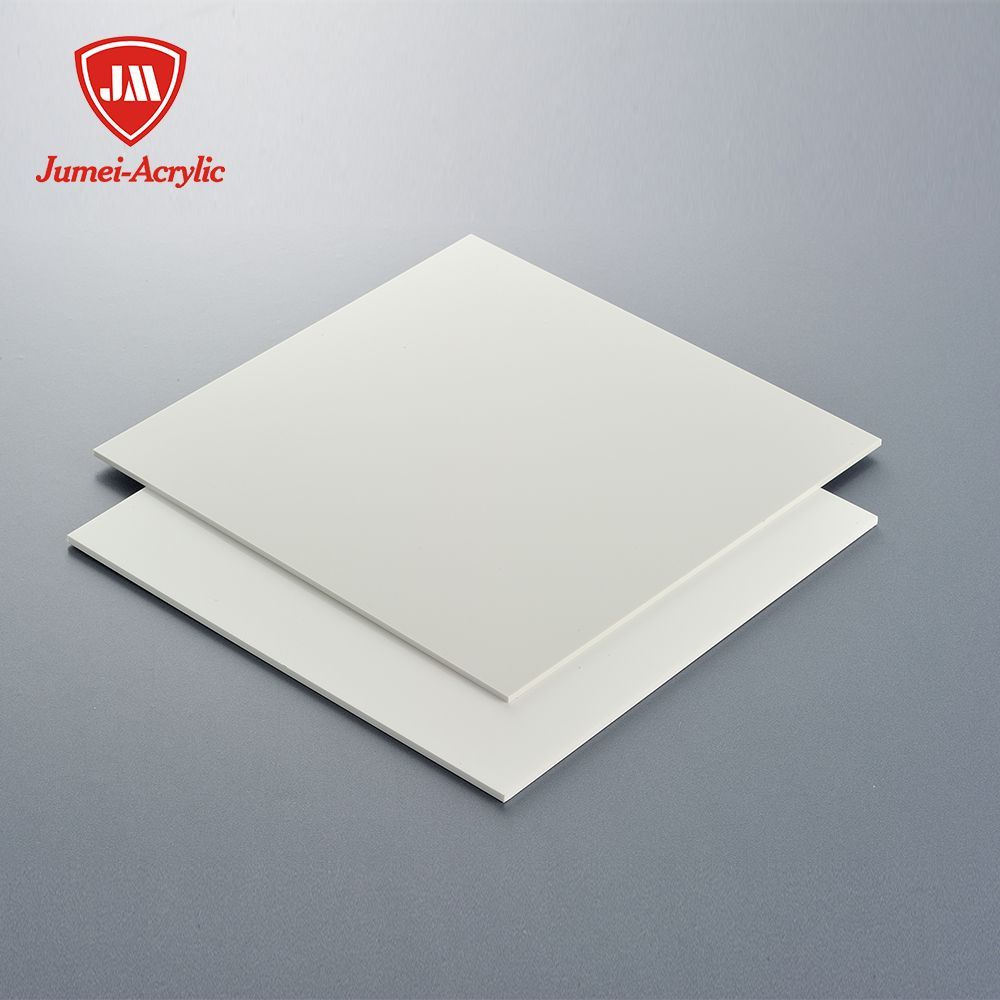
Stain Prevention Capabilities
- Food and Beverage Resistance: FDA-compliant for food contact (21 CFR 177.1010), excluding high-alcohol foods. It resists staining from vinegar, sauces, oils, and acidic foods like citrus.
- Medical Substance Stain Prevention: Tested against blood, iodine (Betadine), and urine with no visible staining after 24 – 48 hours. Easy to clean with hot water and non-abrasive detergent; antimicrobial coatings available
- Ink and Marker Resistance: NF-certified sheets (EN 263) show resistance to marker ink and paint, making them suitable for educational and public spaces.
- Long-Term Color Stability: UV-stabilized acrylic resists yellowing and maintains optical clarity for years. ASTM D4802 and ISO 9001:2015 certified for durability and color fastness.
Surface Integrity Maintenance
- No Degradation from Repeated Chemical Exposure: Withstands daily cleaning in hospitals, labs, and food service without surface damage. Maintains tensile strength and gloss even after 7-day exposure to disinfectants.
- Maintained Surface Smoothness Over Time: Non-porous, glossy finish resists micro-abrasions and retains smoothness. Flame polishing and CNC finishing ensure long-term edge and surface quality.
- UV Resistance and Color Fastness: UV stabilizers absorb harmful rays, preventing yellowing and brittleness. Several manufacturers offer a 10-year UV warranty.
- Temperature Cycling Durability: Operates reliably between -40°C to +80°C; Tg around 105°C. Resistant to thermal stress cracking and deformation under seasonal fluctuations.
Benefit #04: Long-Term Durability
- Impact Resistance: Acrylic sheets are up to 10x more impact-resistant than glass, making them ideal for high-traffic and safety-critical environments.
- Scratch Resistance: Cast acrylic sheets like AGLAS SAN offer Brinell hardness of 36 HB, ensuring resistance to surface abrasion over time.
- Flexural Strength: AGLAS SAN sheets exhibit a bending strength of 117 MPa, surpassing many thermoplastics and maintaining structural integrity under load.
- Tensile Strength: With tensile strength values around 70 MPa, acrylic sheets resist cracking and deformation under tension.
Environmental Durability
- Temperature Tolerance: Acrylic sheets remain stable between -40°F and 180°F. Beyond 180°F, deformation may occur, but some variants extend usability up to 120°C (248°F).
- Humidity Resistance: Water absorption rates are as low as 0.011%. That’s how acrylic sheets resist swelling, rotting, and microbial growth in humid environments.
- UV Stability: UV-protected acrylic sheets block 98% – 99% of UV rays, preventing yellowing and brittleness even after 10+ years of outdoor exposure.
- Thermal Cycling Resistance: Some sheets hold action through repeated heating or cooling cycles. No surface deterioration occurs under certified EN 263 and NF116 standards.
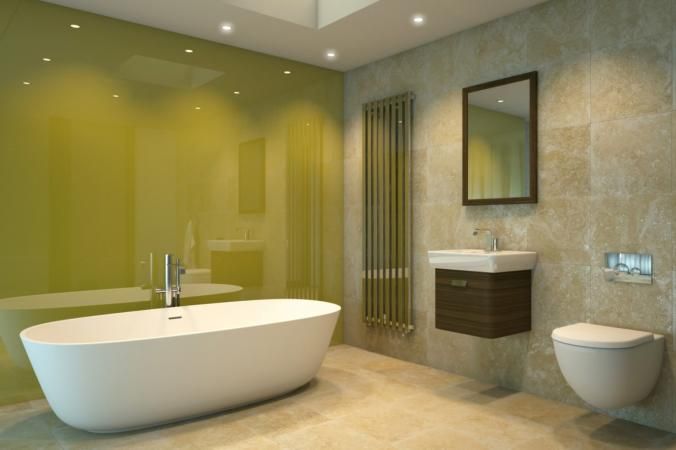
Wear Pattern (Including Shower Walls)
- High-Traffic Area Performance: In hospitals and food service zones, acrylic partitions show minimal wear after years of use, retaining clarity and structural strength.
- Edge Durability and Chip Resistance: CNC and laser-cut edges, combined with flame polishing, produce smooth, chip-resistant finishes that withstand frequent handling.
- Surface Wear Over Time: Acrylic retains gloss levels of ≥87 GU even after thermal treatment, with no significant haze or microcracking under normal use.
- Antimicrobial Properties Through Wear: Sheets embedded with Microban® technology maintain >99.9% bacterial suppression throughout their lifecycle.
Commercial Testimonials
Ta Fu Chi Plastic reports over 100,000MT of acrylic sheets deployed in commercial bathrooms, partitions, and cabinets with minimal failure rates. ALTUGLAS™ sheets used in bathtubs and shower trays across Europe are certified for thermal stability and long-term sanitary use.
Benefit #05: Customized Fabrication
- Standard Sizes: Common dimensions include 1220×2440 mm, 2050×3050 mm, and 2100×3100 mm.
- Custom Cutting: Sheets can be laser-cut, CNC-machined, or sawn to precise dimensions, supporting complex layouts and fixture integration.
- Thickness Range: Available from 1.8 mm to 40 mm, with popular sanitary grades between 2.5 mm and 5 mm.
- Large Format Possibilities: Sheets up to 3050 mm in length are used for spa tubs and wall panels.
- Complex Shape Fabrication: Thermoforming grants access to deep draws and intricate contours for bathtubs, basins, and shower trays.
Surface Treatment Options
- Textured Finishes: Matte, frosted, and satin finishes reduce glare and add tactile appeal.
- Anti-Glare Treatments: Ideal for high-light environments like clinics and spas.
- Color Options: Over 60 standard colors available; custom color matching supported for brand consistency.
- Printed Graphics: UV printing and screen printing allow branding, instructions, or decorative patterns.
- Embossed Designs: Used in luxury sanitary ware for visual depth and anti-slip surfaces.
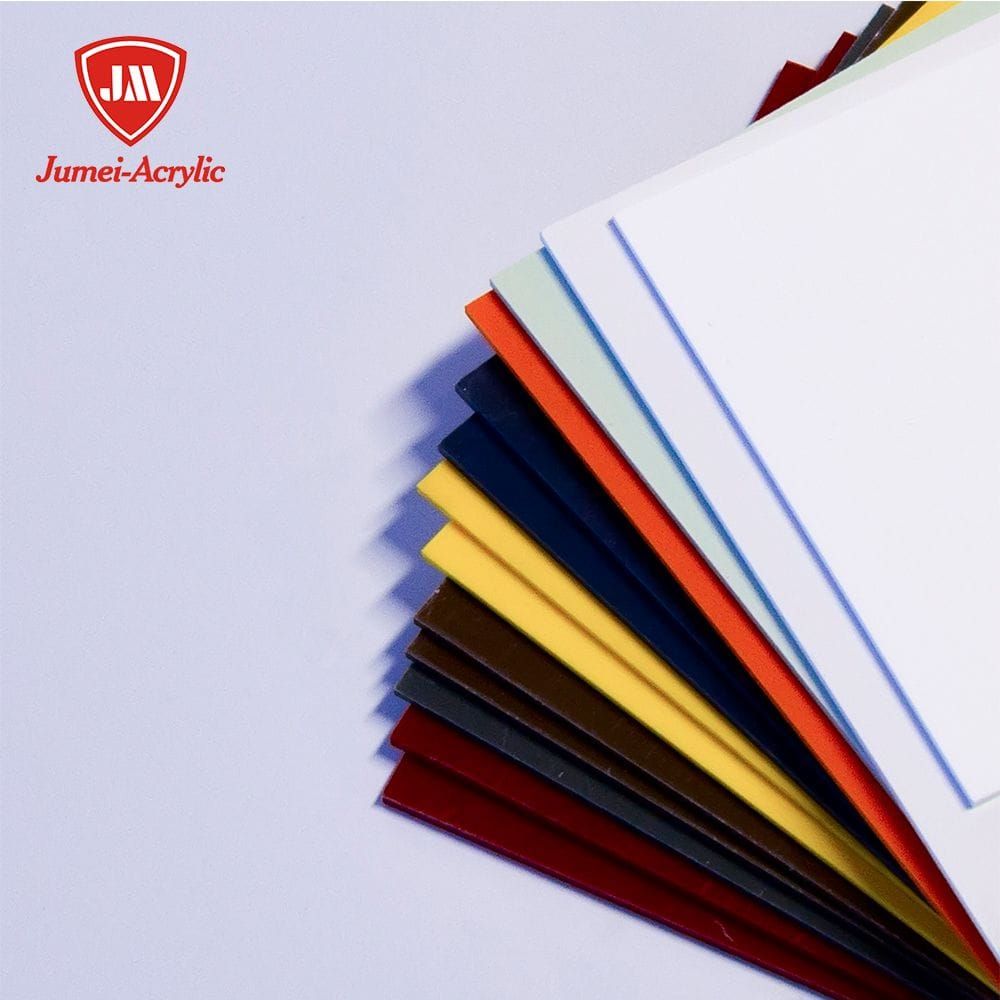
Edge Finishing (Wall Panels)
- Polished Edges: Flame or buff polishing creates a glossy, clean finish.
- Beveled Edges: Adds elegance and reduces sharpness for exposed edges.
- Rounded Corners: CNC or manual rounding for child-safe and ergonomic designs.
- Custom Profiles: Edges can be shaped to fit frames, seals, or adjoining materials.
- Joining Methods: Solvent welding, mechanical fasteners, and adhesive bonding ensure watertight seams.
Hardware Integration
- Mounting Compatibility: Sheets can be drilled or slotted for wall brackets, floor mounts, or embedded supports.
- Attachment Methods: Screws, adhesives, and clamping systems are commonly used.
- Hinge and Pivot Systems: Acrylic-compatible hinges like Acryl-Hinge 2 allow wrapped or flat installations.
- Locking Mechanisms: Integrated drop-lock systems are used in sanitary stations and vending units.
- Electrical Integration: Sheets offer high dielectric strength (30 kV/mm) and low water absorption (0.3%), making them safe for embedded lighting and sensors.
Design Support Services
- Engineering Consultation: Experts assist with material selection, forming techniques, and compliance.
- CAD File Support: 3D models and DWG blocks available for integration into architectural plans.
- Installation Planning: Guides and videos help with surface prep, sealing, and mounting.
- Technical Specs: Sheets conform to EN 263, ISO 9001, and ASTM D4802 standards.
- Project Management: OEMs like Jumei and AML provide end-to-end support from prototyping to delivery.
Bonus: Safety (Fire Resistance)
- Shatter-Resistant: Acrylic is up to 17 times more impact-resistant than glass, reducing the risk of dangerous shards during breakage.
- Edge Safety Considerations: Sheets are often supplied with rounded or polished edges, minimizing cuts and abrasions during handling or installation.
- Impact Resistance in High-Traffic Areas: With a Charpy impact strength of 12 kJ/m² and Rockwell hardness of M95, acrylic sheets withstand frequent contact in hospitals, labs, and public restrooms.
- Reduced Injury Risk from Breakage: Unlike glass, acrylic breaks into large, blunt fragments, significantly lowering injury risk in case of accidental damage.
Fire Safety Properties
- Self-Extinguishing Characteristics: Many sheets meet UL94 HB flammability rating, meaning they burn slowly and may self-extinguish when the flame source is removed.
- Flame Spread Ratings: Acrylic sheets typically have a low flame spread index, making them suitable for interior wall cladding in regulated environments.
- Smoke Generation Properties: Compared to PVC or polycarbonate, acrylic emits less toxic smoke, aiding visibility and reducing respiratory hazards during evacuation.
- Building Code Compliance: Products like PLEXIGLAS® meet ANSI Z97.1 safety glazing standards at thicknesses ≥0.080″.
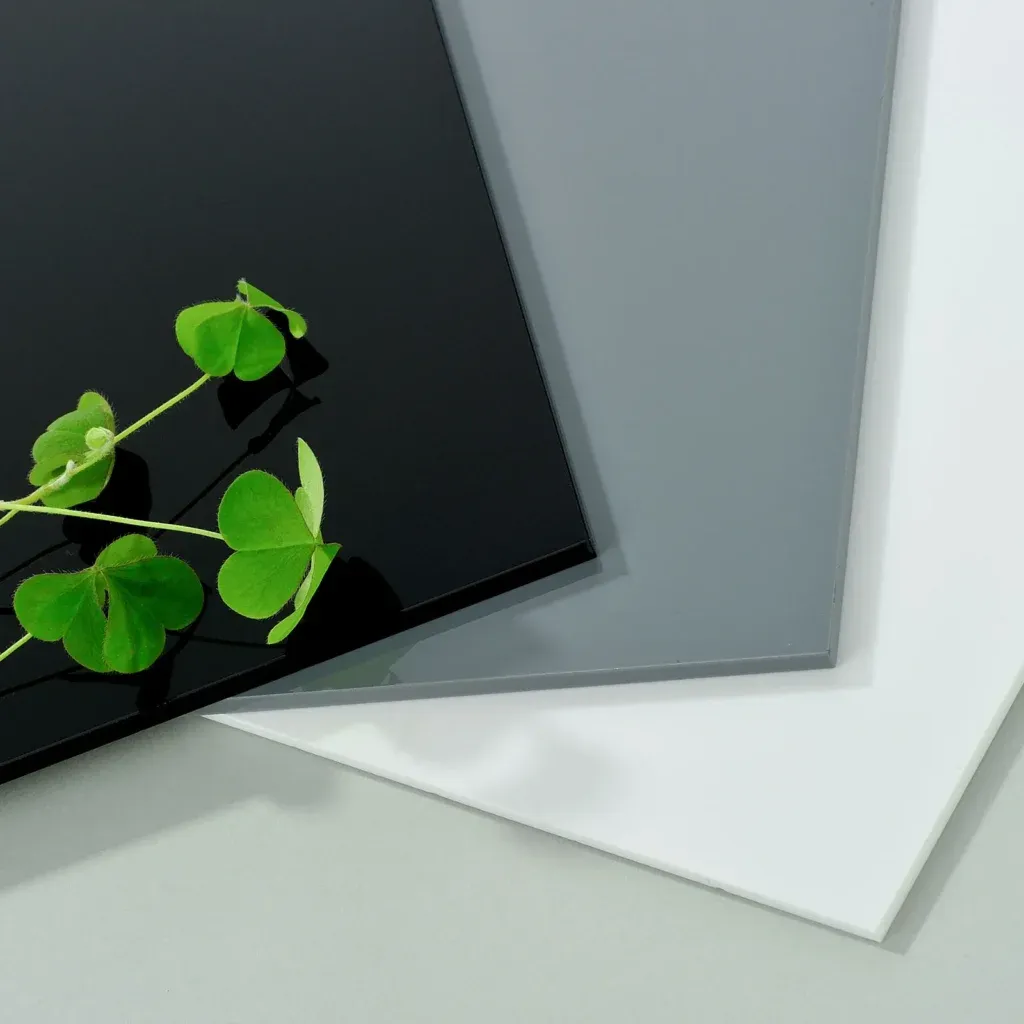
Electrical Safety Features
- Electrical Insulation Properties: Acrylic has a dielectric strength of 30 kV/mm, making it highly resistant to electrical breakdown.
- Static Electricity Considerations: Acrylic is an insulator and can accumulate static charge. Anti-static variants like AC-300 Cast Acrylic dissipate charge in <0.05 seconds, preventing ESD events.
- Grounding Requirements: Standard acrylic does not require grounding unless used in environments with flammable vapors. Anti-static sheets should be grounded to prevent tribocharging.
- Use Around Electrical Equipment: Acrylic is widely used in electrical enclosures, control panels, and cleanrooms, thanks to its infrared transparency and non-conductive nature.
Health and Safety Compliance
- Non-Toxic Material Certification: Products like ALTUGLAS™ and Jumei sheets are certified ISO 9001, CE, RoHS, and REACH, ensuring no heavy metals or toxic additives.
- VOC Emissions: Chemcast® EcoGreen sheets are VOC-free, reducing indoor air pollution and supporting LEED credits.
- Food Contact Safety Approvals: ACRYLITE® sheets meet FDA 21 CFR 177.1010 for food contact, suitable for hot-filled applications up to 150°F.
Purchasing acrylic isn’t precisely like everyday online shopping. ‘Select or click on the product to add the items to the cart’ – it doesn’t work that way. Instead, you’ll have to be interested in consultation first.
Conclusion
Sanitary acrylic sheets hold a winning combination of hygiene, durability, and design flexibility. From a sleek, modern finish to strict or heavy sanitation applications, they deliver on every front. Every benefit appears to be both immediate and long-term for suitable projects.
Get Your Sanitary Acrylic Sheets from JUMEI
No need to overwhelm yourself, even with the strictest standards and topmost quality. Jumei Acrylic is ready to deliver sanitary acrylics from the core. We have the best equipment, standards, expertise, and commitment to meet your needs. Contact us to know how we can meet your specs.





